13 tips to start a clothing store online
- Determine your niche and USP
- Decide on your business structure
- Write a business plan
- Find the right e-commerce platform
- Choose your business name and domain
- Create your team
- Make it official
- Find a supplier
- Develop your branding
- Build your website
- Launch your business
- Start your marketing process
- Be ready to change
If you’re looking for an easy-to-use, all-in-one e-commerce platform, consider Jotform Store Builder. You can create your own online store using Jotform’s drag-and-drop builder, which means you don’t need any coding knowledge. The store builder features more than 80 widgets that are easy to use and can enhance and customize your store.
Once you’ve created the store, you can add product images, descriptions, and options, so customers can easily shop online. While there are more than 100 store templates to help you get started, they’re all customizable, and you can add your logo and choose a color scheme to reflect your branding.
Jotform Store Builder connects with more than 25 online payment gateways, including popular options like PayPal, Square, Stripe, Venmo, and Apple Pay. Jotform doesn’t charge any additional transaction fees, so you only pay the transaction fees charged by the payment gateway you use.
With your store created, you can embed it into your website, send links through email, add it to your WordPress site, or create a QR code to easily share it in different media.
How to start an online clothing store
Starting an online clothing store takes a lot of work, but it can be a lucrative and rewarding experience. The more planning and research you do before launching your store, the greater the chances it will be a success.
Reasons to choose online over brick and mortar
Opening your store online compared to starting a brick-and-mortar location offers several advantages. First, your audience isn’t restricted by geographic location when selling products online. You could launch a specialized store even if your local target audience isn’t large enough to support that niche. With a wide base of online customers, your specialty store could still be a success.
Launching online also saves you the cost of renting and operating a brick-and-mortar location. As a result, there are fewer equipment purchases and fewer staffing needs.
Even if you already have a brick-and-mortar store, launching an online storefront can boost your sales simply because of the unrestricted audience. More sales and higher profits are often a click away.
Skills needed to run an online clothing boutique
Before you get deep into the process of planning your clothing business, consider whether you have the skills needed to run an online clothing store:
- A sense of fashion. A sense of style and, more important, trends can help ensure that the products you’re offering will appeal to your audience and, therefore, sell.
- Attention to detail. Everything from style and fit to profit margins and shipping costs matters when selling clothing. Pay keen attention to detail to ensure you don’t overlook important elements.
- Organizational skills. Keeping an entire business organized isn’t a small task. Strong organizational skills will work to your advantage and help keep your business running smoothly.
- Customer service skills. When running a clothing store online, you’re the entire customer service department — at least during your startup phase. Customer service skills and experience will be valuable.
- Creativity. Creativity is a major advantage when you’re in the clothing world. It inspires everything — from your designs to your marketing — and can help improve your business’s overall quality.
While all of these skills are important, it’s equally important to realize where your weaknesses are. For example, if you struggle with marketing, recognize that and take steps to either improve your skills or be willing to hire someone who can help you.
Steps to starting your online clothing store
The following step-by-step process will guide you through starting your online clothing store.
1. Determine your niche and USP
Before you decide to start an online boutique or clothing store, think about the niche you’ll fill. You can do this in two ways. First, look at the types of clothes that are on trend and in demand, and find a way to offer similar products in a slightly different way.
An arguably more sustainable approach is to look for an unmet need and fill that niche. For example, look for a style or solution that other clothing stores aren’t filling and structure your business so that you offer unique products that fill that need.
As you determine your niche, you’ll also need to define your USP, or unique selling proposition. Your USP is the quality that differentiates your clothing store from others. It could be something as simple as top-quality customer service, the fact that you donate profits to a particular cause, or the unique nature of the clothes you sell.
Once you identify and define this USP, it will help guide you through the rest of the process of creating your store.
2. Decide on your business structure
You can operate a clothing store in multiple ways, and it’s essential to consider which type of business will help you best meet your goals. Today, online clothing stores typically fall into one of four categories.
- Drop-shipping
If you’ve never run a business before and are looking for an easy way to get started, drop-shipping is probably the best option. As a drop-shipper, you don’t have to stock any inventory, saving you storage and inventory costs.
Drop-shipping also allows you to carry a wider variety of merchandise than you could otherwise. When an order arrives, you place that order through a third-party company, like Wish, and have the product sent directly to the customer. You’ll be able to mark up the product, so you profit from the sale, and there’s no need for you to deal with shipping.
The downside to drop-shipping is that it can be difficult to source unique products since other drop-shippers have access to the same inventory. As a result, you may need to lower your prices to stay competitive, but that can cut into your profit margins.
In addition, since products are sent directly from third-party companies, you can’t supervise order accuracy or have much quality control over the products that are going out.
- Private label
If you choose the private label route, you’ll retail clothes that a manufacturer produces but sell them under your business label. This route can save you the time of designing clothes and having them manufactured, and you’ll be able to access a wide variety of designs.
The private label route can be expensive, though, since you’ll need to pay for the clothes and the labeling. You’re also limited to the designs, colors, and inventory that a manufacturer has available, so this business model can be restrictive.
- Custom clothes
If you’re a skilled clothing designer, you might opt to design and sell all of your clothes yourself. This is one of the most difficult business structures to start, especially because of the significant investment you’ll need to make in inventory, supplies, and time.
However, the custom route gives you complete control over the garments you sell, and it lets you build your own unique clothing line and brand.
If you sew the garments yourself, be prepared for challenges like hiring a production team and dealing with sourcing materials. Alternatively, you can design the garments yourself and outsource their production to a factory outside of the United States, which keeps costs down but takes some control out of your hands.
- Print on demand
If you have design skills and want to have your own line of clothes without the hassle of mass production and inventory storage, then print on demand might be the right option for you.
Print-on-demand garments start as a solid color and are then customized with the designs you’ve created. You can print the garments yourself or go through a third-party printer that will handle the printing and shipping as each order comes in.
Print on demand gives you the ability to customize your garments and build a recognizable brand. It can be time-consuming, especially if you print the garments yourself. If you work with a third-party printer, the cost of those garments can be high, and you may have lower profit margins.
3. Write a business plan
Writing your business plan sounds simple, but you must put significant time, effort, and research into this part of the process. Think of your business plan as the roadmap for creating and launching your online store. Use the process of writing the business plan as your opportunity to identify and fix mistakes before you’ve put time and money into them.
Market research
Start with market research. Conduct a market analysis to determine if there’s demand for your business and the products you intend to sell. Social media gives you a way to connect directly with your target audience. You can gauge reactions to products, conduct polls to determine the ideal price point, and determine unmet needs that might help you develop new product ideas.
It’s also important to define your buyers. Consider creating buyer personas that are as detailed as possible, including everything from their age to the publications they read to their income and spending habits. You can use these personas to develop marketing strategies, create new products, and further define your business.
Business goals
The information from your market research should help you more thoroughly define your business. Describe your business in detail, and state your goals for the company. Create an executive summary — a short excerpt that will give a reader insight into your business, the types of products it will sell, and the goals that motivated you to create it.
Business structure
Next, it’s time to outline the details of your online store. This can be one of the most challenging elements of your business plan because it’s so detail-focused.
Start by ironing out key elements of your store. What products will you offer, what’s unique about them, how many variations will you offer, and how will you be getting the products?
Next, identify product costs and markups, shipping fees, the cost of shipping materials, and more.
Take the time to make a list of the equipment you’ll need. For example, if you’ll be producing products, how much will it cost to obtain the necessary materials and equipment? Where will you store the products? If you’re handling the shipping process, what equipment will you need? Do you need storage for shipping materials?
This is also the time to develop your business policies, like your return and shipping policies. And it’s time to do some preliminary research into other business expenses.
Consider the available e-commerce website builders and look into their fees. Be sure to account for payment processing fees. Don’t forget about taxes and any services you may need to contract out, like logo design, branding, website development, product photography, and tax preparation. It’s also important to consider what your marketing expenses will be.
Budget
As you research fees and expenses, put them into a budget. You may want to break the budget into phases — for instance, phase I: startup costs and phase 2: operating expenses once the store is up and running.
Once you’ve created your budget, you’ll have the information to determine if you need to seek financing. First, consider how much money you have available to invest in your business and your total startup costs.
If you need financing from an outside source, consider your options. For example, friends and family might be willing to loan you money, or you can look into taking out a small business loan. If you’re applying for a loan, having a well thought-out and highly detailed business plan can increase your chances of being approved.
Marketing strategy
It’s also important to create a detailed marketing strategy to guide you through the business startup and general operation phases. Think about the best ways to engage with potential customers and drive traffic to your site.
Your marketing can encompass many strategies, including SEO-driven digital ads, social media posts and ads, email marketing, content marketing, and publicity.
Work out the details of your marketing strategy. Which platforms will you use and how often? What will your monthly marketing spend be during the startup and general operation phases? What discounts and incentives will you use to build your initial audience?
Consider whether you have the skills to do your marketing or whether you’ll need to hire or contract with a professional marketer. If you think you’ll need a professional, start researching rates to understand what that will cost.
4. Find the right e-commerce platform
You need to find the right platform for your e-commerce website. Options like Shopify, WordPress, WooCommerce, and BigCommerce are popular.
Each website builder offers templates and customization options, which are user-friendly, even if you have no site-building experience. As you explore your options, consider pricing and other important features like the availability of customer support and the platform’s ease of use.
Also consider which payment gateways the e-commerce site builder supports. Each gateway carries different rates and restrictions. If you’re hoping to reach an international audience, choose a gateway that works in the areas you’re targeting. Common gateways include PayPal, Authorize.net, and Stripe.
5. Choose your business name and domain
As you solidify plans for your website, decide on a business or brand name and a domain name. It’s important to make sure that your business name isn’t already taken. Start by doing a Google search and use different variations of keywords to see if you can find any businesses with the same or a similar name. Avoid a name that could be easily confused with that of another business in the same industry.
Next, make sure that your name isn’t already trademarked. A trademark prevents anyone else from trademarking the same or a similar name for a business in the same industry. You can search for a trademark on the United States Patent and Trademark Office site. If you don’t find one, you can register your business and apply to trademark the name.
6. Create your team
To successfully develop an online clothing store, you may need some or all of these key team members to help:
- Small Business Administration contact. Your local Small Business Administration office can be a valuable resource as you build your business. Consider reaching out to the office and establishing contact with a representative who will be able to answer your questions and help you find local resources as you need them.
- Business accountant. It’s a great idea to establish a relationship with an accountant, particularly as you’re setting your business up. Your accountant can help ensure that you implement the right recordkeeping, and they can assist with tax questions.
- Business lawyer. A business lawyer can help you with everything from applying for a trademark to ensuring that your website policies are legal and help protect your business.
- Website developer. While many DIY-friendly website builders are available, creating a website from scratch takes time. You might want to hire a website developer to either help with the process or give your website a final polish after creating the basic structure. Some developers also offer website maintenance and troubleshooting services. It’s a great idea to have someone on your team who can handle these things if you need them.
- SEO expert. If you want to incorporate SEO keywords into your site and descriptions, consider hiring an expert to help with the initial research and guide you on how to best incorporate keywords.
- Copywriter. A copywriter can help you write a compelling brand message, website copy, and product descriptions to drive sales and better connect with your audience.
- Graphic designer. A graphic designer can help with logo creation, developing branding colors, and fulfilling other design needs that you’re likely to encounter as you develop your site and marketing materials.
7. Make it official
You’ll need to take care of some paperwork to make your business official. To start, form your business entity, whether a sole proprietorship, an LLC, or a general partnership. Each entity type’s requirements, pros, and cons vary, so it’s best to discuss this with a business lawyer and an accountant. They can guide you through establishing a business in your state.
You’ll also need to apply for an employer tax identification number or EIN. You can apply for your EIN through the IRS website.
Most towns require you to hold a business license. You must apply for that license once you know your official business name. You can find information on how to do that at your local town hall. Most licenses are in the $25 to $100 range.
Additionally, you need to apply for a sales tax permit through your state. Your local small business administration can help you with this process. It’s essential to have your permit before you start selling goods.
8. Find a supplier
If you haven’t yet found suppliers for your raw materials or your products, this is the perfect time to start vetting suppliers. Do plenty of research, compare costs, and compare quality. (Most suppliers will send you samples.)
Make a note of how easily you can communicate with each supplier. Find out if you’ll have a primary contact within the company since this can be particularly important if you’re dealing with a problem or a time-sensitive challenge.
As you research suppliers, pay attention to details like minimum order requirements and shipping fees. Many suppliers work with businesses that purchase in bulk; you might find that the fees for small orders will eat into your profit margins. It’s best to find a supplier who is open to working with a small business and offers an order minimum that you can comfortably afford.
9. Develop your branding
Once your business name is trademarked, focus on developing your branding. If you have a graphic design background, you may be able to do the branding yourself. However, if you don’t have strong graphic design skills and knowledge, this is a task that’s often best left to a professional.
Consider contracting with a graphic designer or brand specialist who can help you solidify your brand’s elements. A talented designer will be able to develop your brand color palette and logos in formats and dimensions that will work well for your website, social media, and even on garments or clothing tags.
10. Build your website
Once you’ve finalized your products and your branding, you can move on to building your website. Most e-commerce site builders offer a wide selection of templates and themes, so you just have to customize the site with your branding and then upload your products.
Consider search engine optimization when crafting your website. Performing keyword research and identifying your target keywords allows you to determine which words to incorporate into your site. Keep those keywords in mind as you write your website copy and when you move on to creating your product descriptions.
The product pages will require the most work. You may want to contract with a copywriter to write your product descriptions, especially if you’ll be offering lots of products.
If you’re drop-shipping, you may be able to use the manufacturer’s descriptions for each product, but this can be a lost opportunity to make a sale. A good copywriter can craft compelling descriptions to help drive sales, and those custom descriptions will make you stand out from other retailers selling the same products.
Copywriters can also incorporate keywords to help ensure your product listings display in search results, driving traffic to your site.
Before your site is complete, create checkout policies and determine your shipping prices. This is the time to finalize items like your return policy and make sure that the policy is clearly stated on your site. You’ll also need to ensure that you collect sales tax on purchases, so consider whether the site builder has a feature that will automatically calculate tax for you.
When it comes to your shipping costs, decide on a shipping platform and determine your prices for different box sizes and weights as well as different destinations. Customers don’t like paying for shipping, so you may want to wrap some of your shipping costs into your product pricing, which can help you stay competitive with sites like Amazon. In addition, many website builders offer integrations with shipping services, so you can set the checkout process to calculate and charge shipping automatically.
11. Launch your business
It’s easy to get caught up in constantly rethinking and improving your website, but you’ll have to launch the site at some point. Before you do, perform plenty of testing to ensure that the site works well.
It’s helpful to enlist your friends and family to assist with the testing. Ask them to navigate the site, visit different product pages, add and remove products from your cart, test functions like different sizes and colors, and complete a checkout process. Finally, verify that the payment process goes smoothly and that your order confirmation, order update, and shipping update emails are delivered.
During this time, it’s helpful to have your social media accounts active so you can promote the site’s launch. Consider offering special discounts, like an introductory coupon, to help drive those initial sales and build your customer base.
12. Start your marketing process
Once your site is live, the marketing process becomes even more essential. Ideally, you’ve been building your audience across your social media platforms. Consider using social media marketing and advertising techniques, like boosted posts, social media ads, and partnering with influencers to build your audience.
At the same time, it’s important to drive traffic to your online clothing business in other ways. For example, consider using digital ads to capture website traffic or content marketing to secure placements and links on other sites that could drive traffic to your e-commerce store.
Also consider sending out products for reviews at publications that your target audience reads. Positive product reviews or product photo shoots could send new business your way.
Don’t forget the importance of email marketing. You can build your email subscriber list by offering discount coupons or other perks to site visitors who are willing to sign up. Then, you can send emails to your subscriber lists and easily promote new product releases, sales, and more.
13. Be ready to change
Make sure that you use your site’s data and analytics tools to monitor the shop’s performance and identify what is and isn’t working.
Building and marketing your online clothing boutique is a journey. As you review your site’s performance, you might need to make strategic changes and improvements. You may need to tweak your marketing strategy, reevaluate the products you’re selling, and adjust your product descriptions, but you’ll determine what works best for your business with time.
Starting a clothing store online requires significant time and effort, but it can also be highly rewarding. With an online store, you won’t be restricted to only reaching customers in your local area. Instead, online retail sites open up access to the entire country or world. With the right idea and plenty of effort, you could build your store into a very successful business.

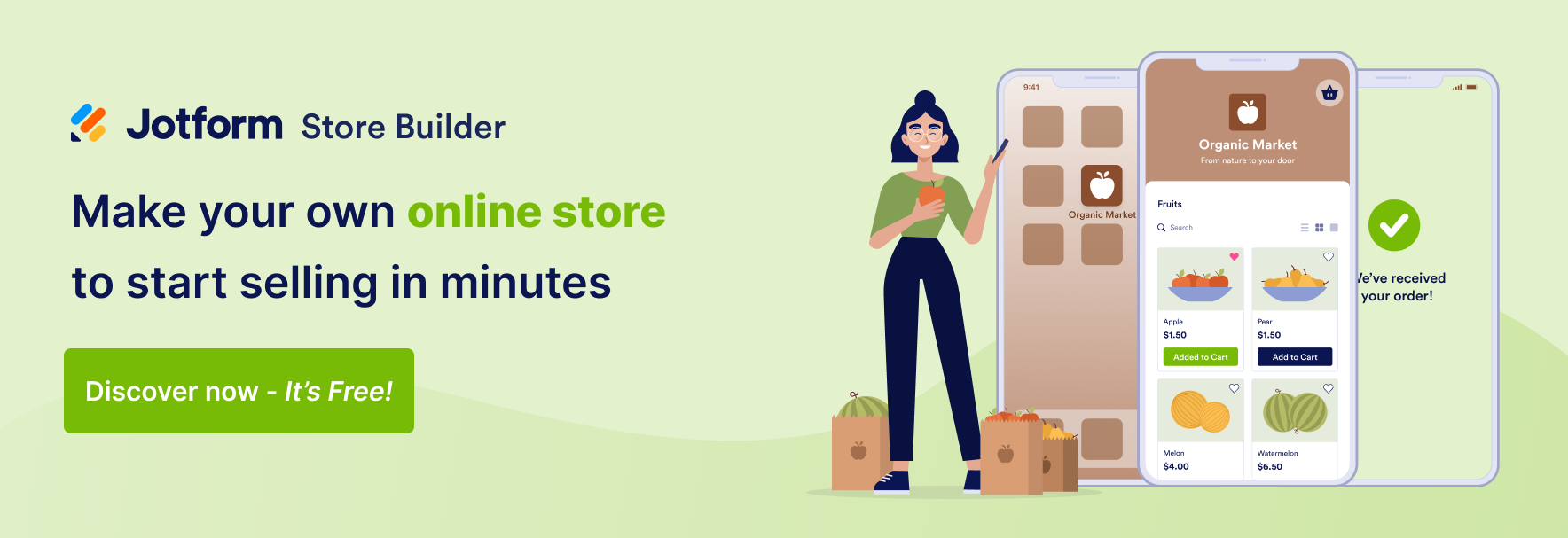







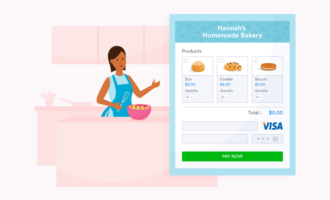







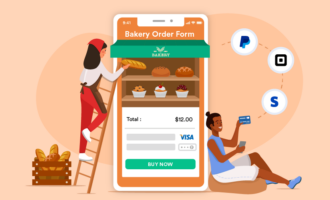
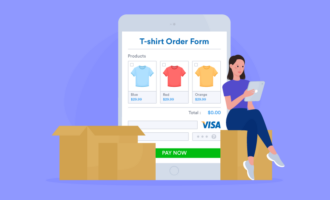






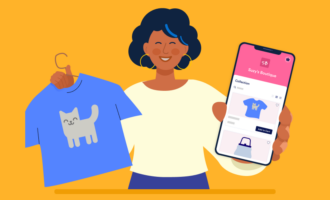


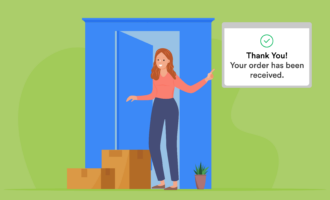



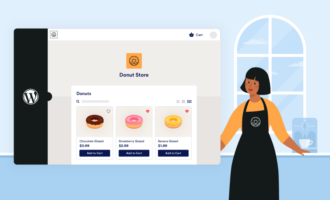
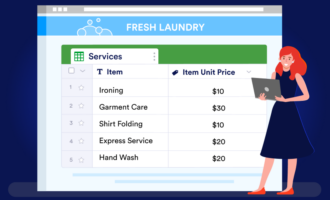



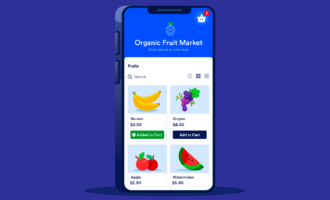




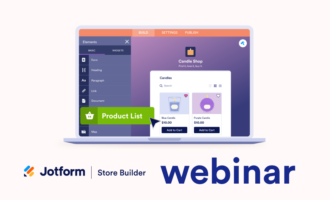


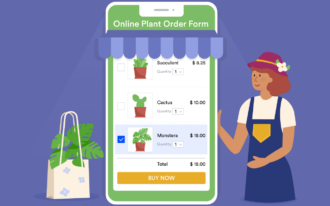

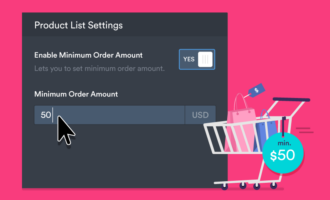

Send Comment: